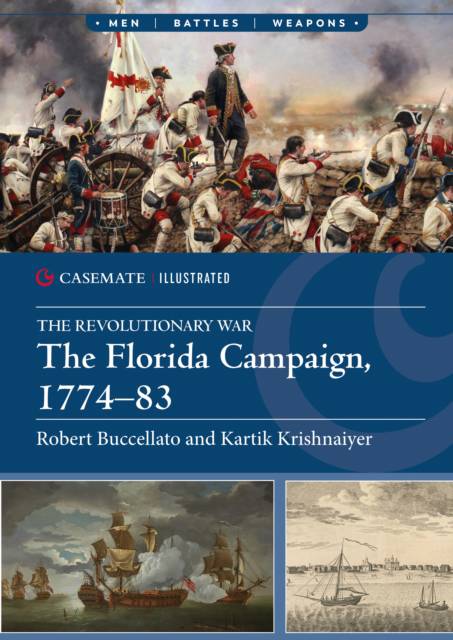
- Afhalen na 1 uur in een winkel met voorraad
- Gratis thuislevering in België vanaf € 30
- Ruim aanbod met 7 miljoen producten
- Afhalen na 1 uur in een winkel met voorraad
- Gratis thuislevering in België vanaf € 30
- Ruim aanbod met 7 miljoen producten
Zoeken
Omschrijving
The strategic role of British East Florida in the Revolutionary War, its battles, loyalist forces, and impact.
During the Revolutionary War, East Florida was a strategic staging ground for the British campaigns in the south. Early in the war, George Washington recognized the strategic importance of neutralizing this loyalist outpost, before its proximity to Georgia and the Carolinas could create problems for the Patriots. East Florida was a haven for runaway slaves, a paradox considering the large, enslaved population in the colony. Following Lord Dunmore's 1775 proclamation of freedom for slaves that fled behind British lines and took up arms, the colony's African-American population swelled and former slaves as well as natives were readily armed to fight against the Continental Army and other Patriots.
East Florida saw two major battles during these campaigns, as well as multiple skirmishes and much political intrigue. While East Florida stayed loyal to the crown there were significant Patriot sympathies in the colony's political leadership. The East Florida Rangers, a loyalist militia unit raised to defend the colony from Patriot incursions, were successful in raiding Georgia and in one such incursion sacked Augusta and came within sight of Savannah.
Three signers of the Declaration of Independence were held prisoner in St Augustine, the capital of East Florida, after the British capture of Charleston. After the battle of Yorktown, East Florida became a loyalist haven and was also the site of the last battle of the war--a naval battle off the Florida coast in 1783.
Fully illustrated with photographs, artwork and maps, this volume explores the multiple invasions of British East Florida by the Continental Army during the Revolutionary War.
During the Revolutionary War, East Florida was a strategic staging ground for the British campaigns in the south. Early in the war, George Washington recognized the strategic importance of neutralizing this loyalist outpost, before its proximity to Georgia and the Carolinas could create problems for the Patriots. East Florida was a haven for runaway slaves, a paradox considering the large, enslaved population in the colony. Following Lord Dunmore's 1775 proclamation of freedom for slaves that fled behind British lines and took up arms, the colony's African-American population swelled and former slaves as well as natives were readily armed to fight against the Continental Army and other Patriots.
East Florida saw two major battles during these campaigns, as well as multiple skirmishes and much political intrigue. While East Florida stayed loyal to the crown there were significant Patriot sympathies in the colony's political leadership. The East Florida Rangers, a loyalist militia unit raised to defend the colony from Patriot incursions, were successful in raiding Georgia and in one such incursion sacked Augusta and came within sight of Savannah.
Three signers of the Declaration of Independence were held prisoner in St Augustine, the capital of East Florida, after the British capture of Charleston. After the battle of Yorktown, East Florida became a loyalist haven and was also the site of the last battle of the war--a naval battle off the Florida coast in 1783.
Fully illustrated with photographs, artwork and maps, this volume explores the multiple invasions of British East Florida by the Continental Army during the Revolutionary War.
Specificaties
Betrokkenen
- Auteur(s):
- Uitgeverij:
Inhoud
- Aantal bladzijden:
- 128
- Taal:
- Engels
- Reeks:
Eigenschappen
- Productcode (EAN):
- 9781636245744
- Verschijningsdatum:
- 15/10/2025
- Uitvoering:
- Paperback
- Formaat:
- Trade paperback (VS)
- Afmetingen:
- 165 mm x 239 mm
- Gewicht:
- 399 g

Alleen bij Standaard Boekhandel
+ 69 punten op je klantenkaart van Standaard Boekhandel
Beoordelingen
We publiceren alleen reviews die voldoen aan de voorwaarden voor reviews. Bekijk onze voorwaarden voor reviews.








